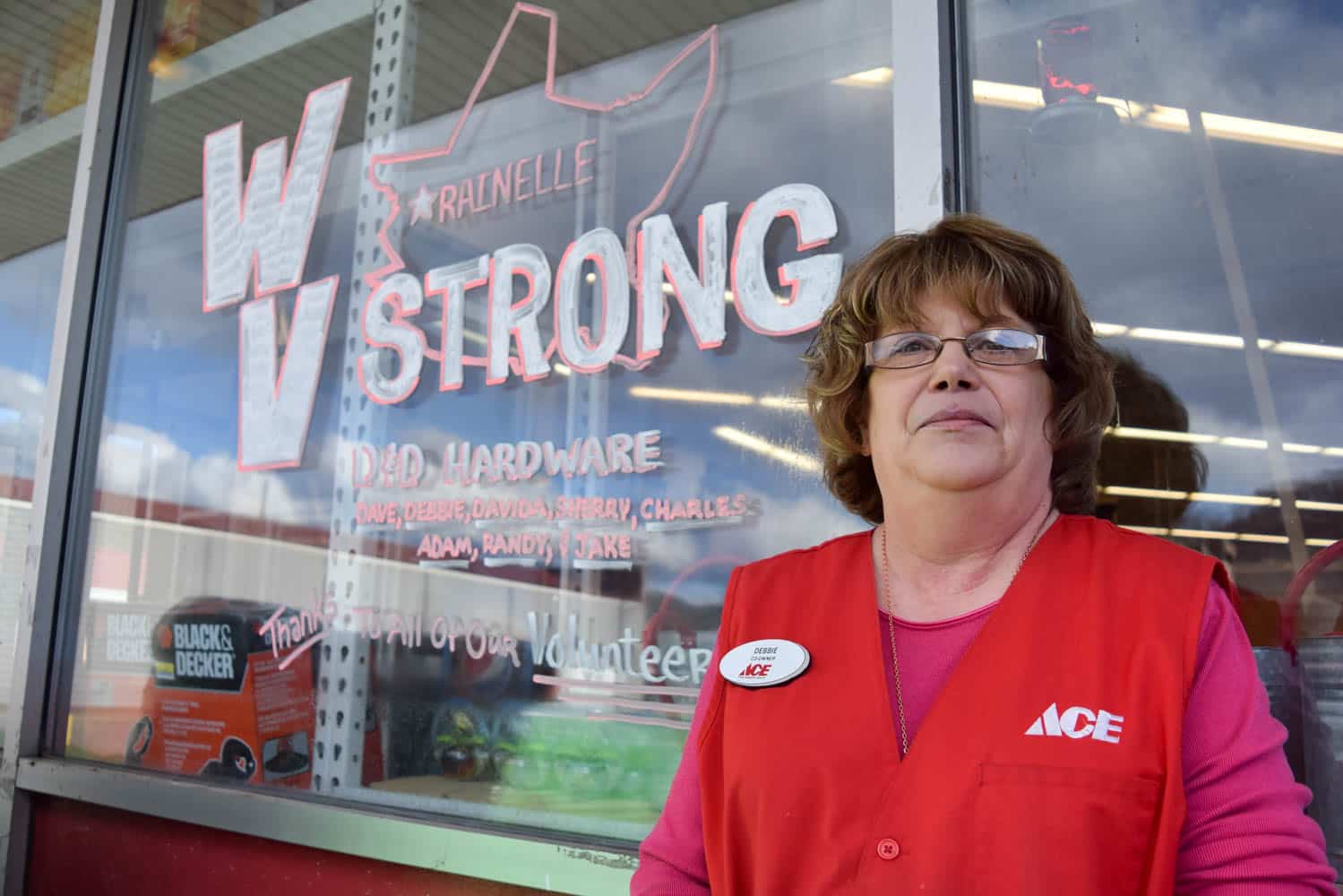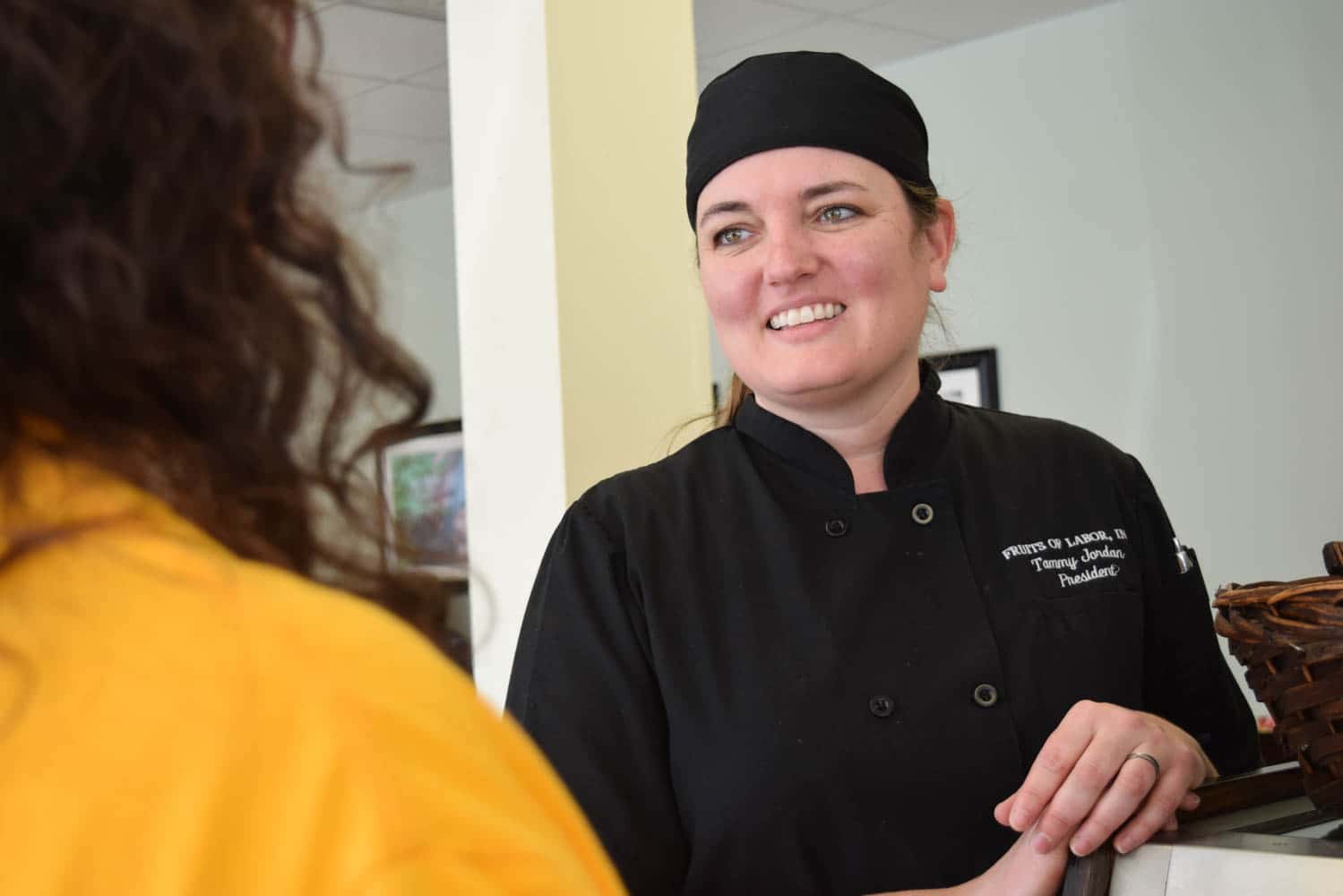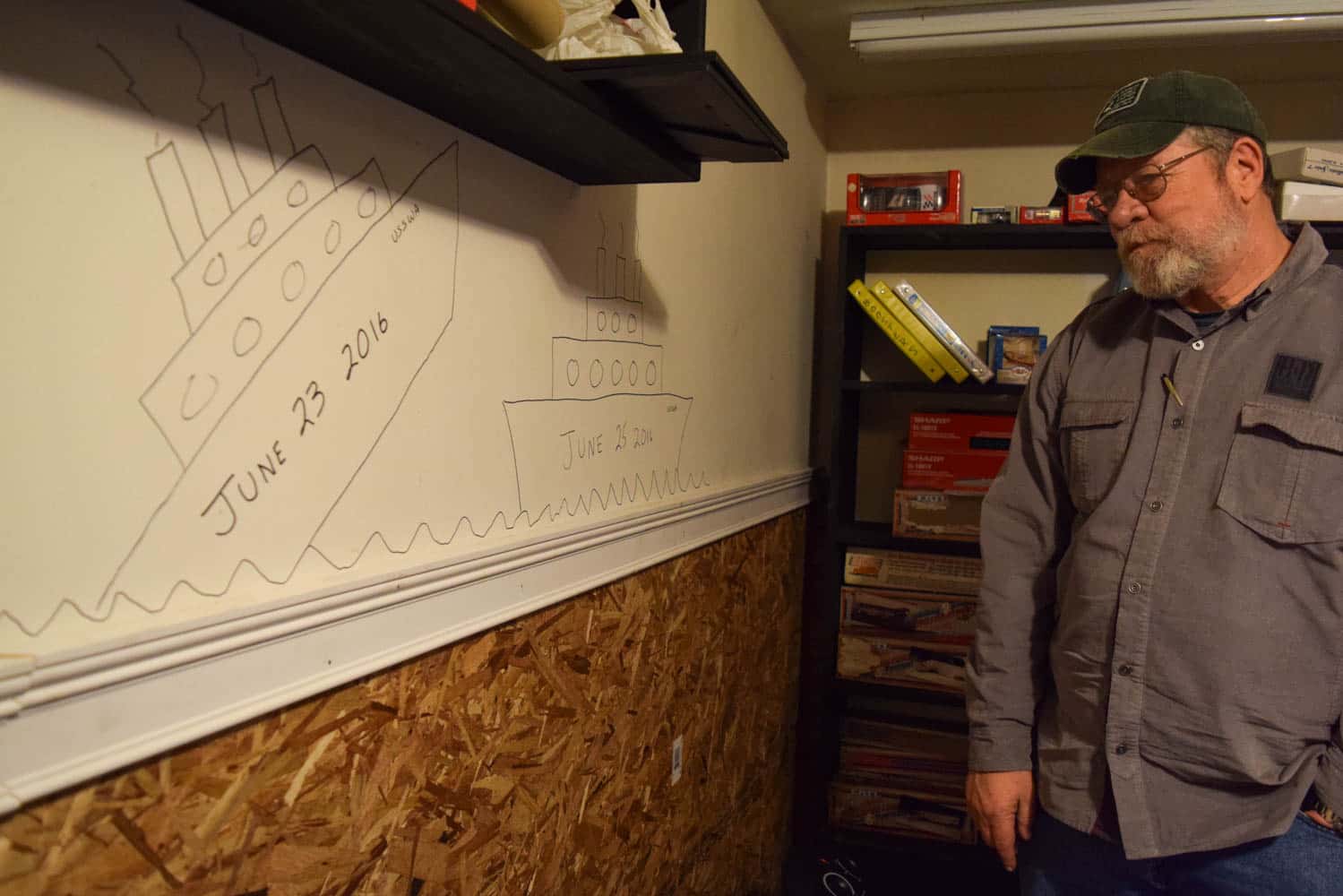Part 2 of 4: Remembering the Flood
One of the deadliest and most destructive floods recorded in West Virginia state history tore through the southern part of the Mountain State on Thursday, June 23, 2016. When the flood water rose in Rainelle store owners looked out for their employees and their lifelong investments too. Some were able to escape their shops safely, while others were stuck, and spent the night in the store.
With strong coal and timber industries, Rainelle had been a prosperous town in the early 1900s. But in the second half of the 20th century saw those areas decline and many smaller family businesses went out of business. Only handful of small businesses remained in downtown Rainelle by the time the flood waters hit in June 2016. A year later, storefronts all along Main Street remain boarded up and empty, though some have recovered.
Here are their stories:

“Hardly a day goes by that the subject isn’t brought up still. Some days it’s easier to talk about it than others.” — Debbie Osborne
Debbie Osborne still has nightmares from the flood.
That Thursday, she was working at Ace Hardware, where she is a manager. Located along Sewell Creek, Ace has survived floods before. Osborne has used barricades at the doors in the past to keep water out. But this time was different. The power was out and the rain kept coming. She decided it was time to abandon the store.
Osborne knew several of her employees would not be able to make it home, so she took six people with her home, just a few blocks away on Ohio Avenue in Rainelle. They watched the water rise outside as Osborne made dinner. The 70-year-old house was new to Osborne. She’d owned it for nine weeks. But, she knew it had never been flooded before.
But soon – water was in her home.
“The water was waist deep on us, and it was cold, and it was dark, and it was scary. I’ve never been through anything like that in my life,” Osborne said.
They crawled upstairs and crammed into the two-foot high attic.
“You could hear the neighbors hollering for help, and there was no way we could help. You could just hear people through the night, crying,” Osborne recalled.
One of the guys in the attic would scoot down the ladder periodically to check how far the water was rising. He would leave marks on the ladder and return later to find the water kept climbing up past his marks Osborne explained.
As the water rose, Osborne and her group started digging around in the attic, trying to find something to start hitting holes in the roof.
“We just didn’t know what we were going to do. We didn’t want to panic. And David’s son, he’s 17, he really kept his cool up until that time and then he said, ‘Dad, I’m so scared.’ And when he said that, we all lost it,” she said.
Before it reached the first floor ceiling, the water started going back down. The seven people in Osborne’s attic remained trapped until a rescue boat came by the next morning.
Back at the workplace, Ace Hardware had seven feet of water in it, losing every bit of merchandise.
“Everything off the shelves was on the floor, the mud was probably four inches thick. It was just a total loss,” Osborne said.
The first day volunteers rushed into town 52 people worked in Ace Hardware. With all of the volunteers’ hard work and help from corporate, Ace reopened within eight days.
“The feeling now is, let’s rebuild. It’s going to take a while, but it seems like everybody is really wanting to get it built back up and get Rainelle back like it was,” Osborne said.

“They said there’d be possible flash floods that day, but you just think there’s certain parts in each town where the water might get over the road or something. So nobody really paid much attention to it. They really didn’t say that they were going to have this epic flood.” – Debra Goddard
From organizing summer programs for kids to providing Internet access and printing abilities, the Rainelle Public Library serves as a vital community center for the small, remote town. But librarian Debra Goddard was not so sure if the library could continue in that role after being destroyed in the June 2016 flood.
Goddard had been working at the library on the day of the flood. At 2:00 p.m., Goddard’s neighbor called her to say that water was rising near her house, a few blocks away from the library.
She closed down the library and decided it was time to go home. It was too late, though – the road to her house was completely covered with water, so Goddard stayed the night at a friend’s house.

On Friday, she tried to come down to the library on Friday, but the parking was still covered in water. She finally made it into the library on Saturday. The smell of propane in the water, plus the mud’s consistency of unfinished pottery, made for a shock.
“Everything was turned over and there was mud all over the place. Just to walk through you had to move furniture out of the way,” she said.
Two firemen had to kick down the library office door so Goddard could retrieve the insurance policy, one of the few surviving files from the library.
“Everything’s covered so thick in mud, it’s hard to clean up. You keep cleaning and it comes back,” she said.
On Monday morning a group of teenage volunteers from out-of-state drove up to the building and got the library’s clean-up process started. Within three days, everything had been removed from the building. All the computers, shelves and books had to be thrown away.
With the help of grants, donations through a GoFundMe account and months work installing new carpet, sheetrock, insulation, heat pumps, electronics and then finally new furniture, the Rainelle Public Library reopened to the public in September.
“We’d go downtown and people would stop us and they’d start crying. There was talk that we weren’t going to be able to come back, but we did it,” Goddard said.
“There’s still a lot of people trying to build back their houses and their lives, so some of those people by this summer may be able to come back and get into reading again,” she said.

“I still get nervous every time it rains. I know it’s not gonna flood. It’s just something that you don’t forget.” — Brad Legg
Brad Legg owns Studio 304, a hair salon in his home located in downtown Rainelle. He works with his mother, who typically runs the phone and front desk. They were open the day of the flood, but not for long.
His 2:00 p.m. haircut appointment came in late and told Legg he had a lot of water pooling up in his front yard. Legg looked outside for the first time all day, saw the water rising up on his front porch and realized he needed to get the sump pump running. Soon, he lost power, stopping the work of the sump pump.
Within 15 minutes, Legg and his mom were walking through his house in ankle-deep water.
Legg’s dad drove down from their house outside of town to get Legg’s mom. They tried to convince their son to leave with them, but Legg said no because he said he thought this was probably the deepest the water would get.
He got into a car in front of his house so he could charge his phone, but the water started to pick up the car and carry it away from his house. Legg opened the car door to get back to his house and water rushed into the car, sinking it back down to the ground.
Legg pushed through the water to get into his salon where the water was up to his knees. Big air bubbles popped up through the doggy door leading to the outside. Suddenly, the water surged up to Legg’s chest.
Legg’s house, built in the 1940s by the Meadow River Lumber Company, sits at a lower elevation within Rainelle and is surrounded on two sides by Sewell Creek. He has experienced six floods in his house since he moved in 2001, but this was the deepest the water has ever been.
“Normally we get up to my ankles, but this time I actually had to swim from the salon door into the house,” Legg said.
With his cat and dog, Legg climbed up his stairs to the second floor of his home. He took a shower with all the hot water he had left to get the smell of dirty, oily water off of him and changed into dry clothes.
Legg’s next door neighbors threw rocks at the side of his house because they couldn’t even see it anymore but wanted to warn him that they saw a car floating toward his house. The car didn’t hit the house, but Legg could still feel the house shaking as rescuers went by in the water all night long.
“I didn’t realize that there was 10 inches of rain that fell in that short period of time. You just look outside and think, oh, it’s raining.”
Legg lost one car, the whole lawn, and the first floor of the house, including the salon.
After the flood, Legg said that he originally did not want to try to live in his house again – he didn’t feel safe, he didn’t even want to reopen his salon because he lost everything in it, the stations, the tools and the tanning bed.
But customers convinced him to stay.
“I love hearing people’s stories I love listening to them when they’re having a bad day — making them leave with a smile. It’s worth it,” he said. “I had several other offers to go to other salons, but I didn’t want to take those offers because my customers weren’t willing to go to another salon. They wanted to come back to Studio 304.”
He finally let volunteers come in and fix up his shop for him. When they asked to work on his house too, he declined and asked them to get the salon back up and running as soon as possible. FEMA helped provide money for Legg to fix up his house later.
Studio 304 reopened in September.

“There’s something good about seeing everything happen because you can process over that time period. To have 24 hours to just realize, okay, this is what we’re going to have to do when we get up the next day, instead of being away from it and sitting there hoping that it’s not going to be that bad and then coming back and it be completely destroyed.” — Tammy Jordan
Tammy Jordan is the owner and president of Fruits of Labor Cafe, the only sit-down restaurant in downtown Rainelle. It also serves as an educational site as part of Fruits of Labor, Inc., which has two outreach programs, “Seeds of Recovery” for adults recovering from drug addiction and “Seeds of Hope” for at-risk youth who are aging out of the foster care system. Participants work for the restaurant during the day and attend classes on the second floor in the evening.
The day of the flood, Fruits of Labor lost power and closed early.
When Jordan and her staff realized it would be unsafe to leave the building, they decided to have an early dinner in the restaurant. They were joined by one couple who was in the store for their last lunch as part of a pastor’s retreat sponsored by Fruits of Labor. Jordan and her chef were in the kitchen preparing the meal while wait staff mopped the floor. The pastor started praying over the meal but the staff interrupted because the water was coming in too quickly to keep mopping it.
They grabbed everything, went upstairs, and had a candlelight dinner.
“You know what’s happening downstairs. Everything’s getting flooded downstairs, but we’re like, what do you do? You just go upstairs and wait,” Jordan said.
Jordan predicted that the water would come in from the back of the building, so she and her staff moved everything — kitchen appliances, tables, chairs — to the front of the store.
As rescue vehicles pushed through the water on Main Street, the water would surge in waves into the street-front stores like Fruits of Labor. Several of the front floor-to-ceiling windows broke, allowing water to sweep in and carry out all of the tables and chairs down the road.
Jordan, her staff, and the pastor couple were trapped upstairs the entire night. They sang for hours, prayed and kept each other awake. Jordan and her chef stayed awake for 24 hours.
But there were still moments of fear. From the safety of the second floor, Jordan watched the next door neighbors, with their two small children, get rescued from their home.
“You never dream that it’s going to be that large. The streams that are coming in are not that incredibly wide. For such a wide valley here, usually the water is able to disperse. But the rain was just such an intensity and did not let up,” she said.
Jordan did not have flood insurance on the building. When she bought it two years ago, it was not listed in the flood zone.
Saturday morning, Jordan and her employees met at the cafe to start clean-up. Church volunteers helped muck the store and get it bleached down within three days. They lost the majority of their kitchen equipment, except for a rolling cart that had been built by Jordan’s father and a toolbox full of recipes, notes, and other bits of nostalgia owned by the chef.
Fruits of Labor reopened nearly three months after the flood in September.
“I feel like every business that as they reopened it was like a triumph,” Jordan said. “The first day we opened, people were coming in and just hugging everybody.”

“I’ve been in here 41 years, and I’ve never had a drop of water in this building.” — Paul Raines
It was raining hard all day. People were running up and down the street outside of Paul Raines’ store, Western Auto, but he wasn’t concerned. There was just a thin film of water on the street.
Around 5:30 p.m. Raines was standing out on the sidewalk under the awning when a man pulled up in a truck and said three trailers just washed into the creek, jammed under the bridge and were blocking the water from passing through. The creek was starting to spill across the banks and head into town.
Within an hour, it was raining like Raines had never seen before. He taped up his doors and barricaded the inside with a thousand pounds of cases of oil.
By 7:30 p.m. the water had pushed the oil barricade back and started pouring into the building. Raines moved into the slightly more elevated part of the store and realized he would have to ride out the rest of the storm from there.
Four and a half feet of water filled most of his building. Hours later, as rescue boats passed by in the flooded street, Raines heard a loud pop. His front doors, which he had locked earlier, flew open. He watched all of his merchandise float out of his store.
“Because I had two years of college, I was smart enough not to run out there in the street and try and save all that stuff before it washed away,” he said. “But if I had had a college degree, I would’ve been smart enough not to be in there in the first place.”
By 3 a.m., Raines waded to his office in the back of the store and climbed up on his desk. He sat there, shaking from the cold until daylight.
When the water receded down to his knees, he walked out of the store up to the shopping center where his wife picked him up. He went home and took a hot shower. He was back downtown Saturday morning to get started on recovery.
A crew of West Virginia University students arrived Monday morning to help clean up. “There were eight or 10 or 12 of them, hauling stuff out here on the street and pressure washing. You had to pressure wash the floors two, three, four times before you could even get them down enough to mop them up,” he said
Western Auto was back up and running within days. First responders came in to buy spray paint for marking houses to be repaired or destroyed. Repairers visited the store to buy supplies for fixing up homes.
Coming back from the flood was a costly and risky investment. Raines’ store was never technically on a floodplain. Raines did not have flood insurance, so he took all of his savings and put it into repairing and reopening Western Auto. But he never once thought about closing up for good.
“Other businesses were waiting to see what we were doing. I’ve got 11 employees. I didn’t think the town could take the hit,” Raines said.
“Sometimes it takes something like this to straighten out some things that needed to be straightened out, get rid of some things that need to be got rid of,” Raines mused, “But by the same token any time something like this happens, you get rid of some things that you didn’t want to get rid of and lose some things that you didn’t want to lose.”

About this series: West Virginia University senior Jennifer Skinner interviewed 19 people in Rainelle, West Virginia to record their stories of the flood from June 23, 2016.



